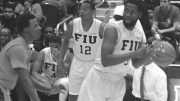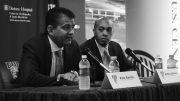With sporadic dark spots around both campuses, the need for adequate lighting has become a growing concern. This creates obvious safety concerns that need to be addressed as the University begins to grow in size.
At a recent faculty senate meeting, the results of a report conducted by civil engineering company PBS&J were brought under scrutiny for solely focusing that both the Modesto Maidique Campus and Biscayne Bay Campus did not have adequate lighting conditions and additional lights needed to be added.
The problem brought up at the meeting was that the report did not really touch upon environmental impacts that adding more lights to the campus can have, such as increased light pollution and affecting wildlife, or even bringing up ways the school can handle the lighting situation in an efficient manner.
While The Beacon understands and sympathizes with environmental concerns, including light pollution, they pale in comparison to the safety of students.
In MMC, there is the canopied area behind the Ryder Business Building which is pitch black. Often, students can be seen resorting to using their cellphones as makeshift flashlights just so they can get around. This does not make a particularly safe environment.
At BBC, only 30 percent of the campus meets adequate lighting requirements. This is a pathetic amount of lighting coverage on campus, and should immediately be improved so that at night students can navigate the campus without concern for their safety.
The Beacon thinks that lighting up darkened areas around MMC and increasing overall lighting around BBC would offer additional safety to students and visitors to the campus as they move about on campus after sundown.
However James Webb, Arts and Sciences faculty senator and physics professor, believes that safety concerns have overshadowed environmental ones. He recently stated that “the lighting study was done towards safety, which is great. But not toward saving light or reducing light pollution.”
One of the concerns with the added light pollution the new lighting is claimed to bring is in regards to the University’s new observatory opening in MMC will hinder the ability to look through the telescope and study the stars.
This seems a little misguided considering Miami is a metropolitan area. While not as condensed as New York City, it nevertheless emits an incredible amount of light pollution. Where in other areas of the United States constellations may be a common sight, they are largely missing in the Miami skyline.
While going green is an important issue for the school, it should not be at the cost of the safety of visitors to the campus. Yet, safety concerns and concerns over the environment need not be mutually exclusive. In changing campus lighting to deal with safety concerns, the University could do so in ways that address environmental concerns, such as light pollution.
For example, The Beacon thinks the University can look into the use of adjusted street lights. They work by providing shields that focus light towards the ground, improving the lighting situation while reducing the amount of light that bleeds into the sky.
Ultimately, The Beacon thinks the University should look into environmentally safe ways to improve the lighting situation. Using LED-based lights to save on energy costs as well as using adjusted street lights may be ways of doing so. However, if it comes down to prioritizing student safety or being environmentally friendly, then student safety must trump other concerns.





Be the first to comment on "The Beacon Editorial: Student safety a concern due to poor campus lighting"